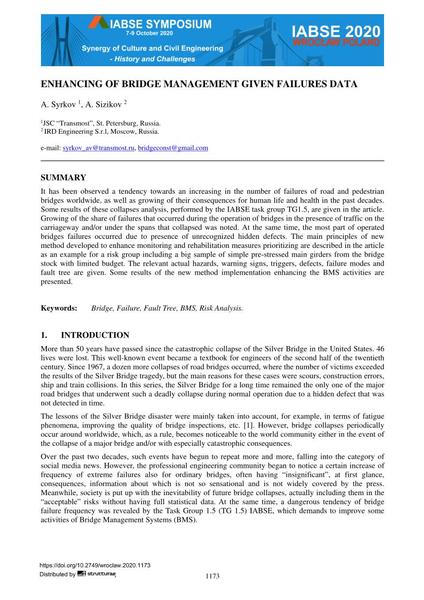Enhancing of Bridge Management Given Failures Data

|
|
|||||||||||
Détails bibliographiques
| Auteur(s): |
A. Syrkov
|
||||
|---|---|---|---|---|---|
| Médium: | papier de conférence | ||||
| Langue(s): | anglais | ||||
| Conférence: | IABSE Symposium: Synergy of Culture and Civil Engineering – History and Challenges, Wrocław, Poland, 7-9 October 2020 | ||||
| Publié dans: | IABSE Symposium Wroclaw 2020 | ||||
|
|||||
| Page(s): | 1173-1180 | ||||
| Nombre total de pages (du PDF): | 8 | ||||
| Année: | 2020 | ||||
| DOI: | 10.2749/wroclaw.2020.1173 | ||||
| Abstrait: |
It has been observed a tendency towards an increasing in the number of failures of road and pedestrian bridges worldwide, as well as growing of their consequences for human life and health in the past decades. Some results of these collapses analysis, performed by the IABSE task group TG1.5, are given in the article. Growing of the share of failures that occurred during the operation of bridges in the presence of traffic on the carriageway and/or under the spans that collapsed was noted. At the same time, the most part of operated bridges failures occurred due to presence of unrecognized hidden defects. The main principles of new method developed to enhance monitoring and rehabilitation measures prioritizing are described in the article as an example for a risk group including a big sample of simple pre-stressed main girders from the bridge stock with limited budget. The relevant actual hazards, warning signs, triggers, defects, failure modes and fault tree are given. Some results of the new method implementation enhancing the BMS activities are presented. |
||||
| Mots-clé: |
pont
|
||||
